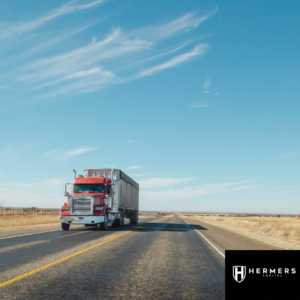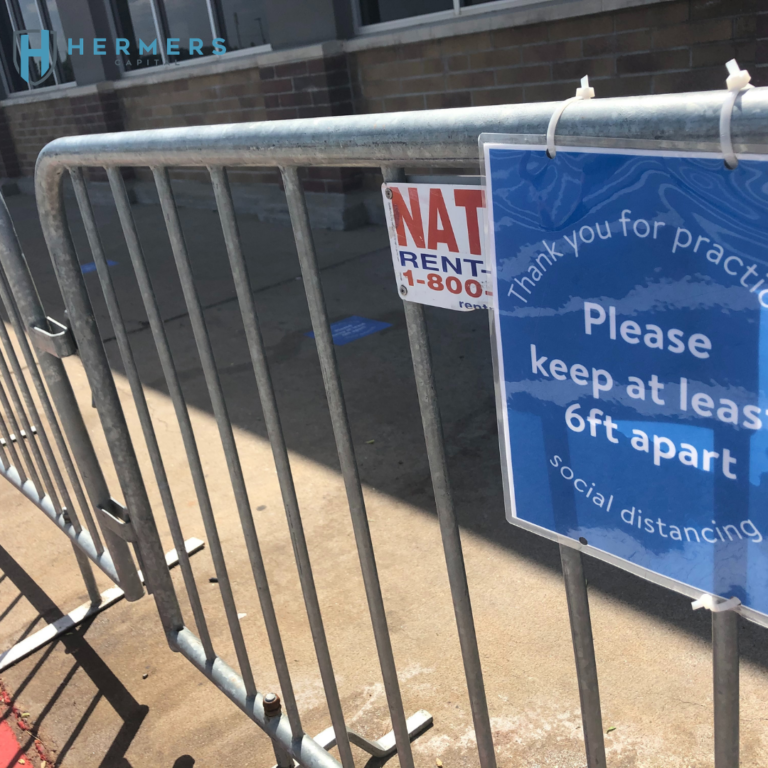
Truck Stops of the Future
Hi-tech with a personal touch
As co-owner and operator of Roady’s, Kelly Rhinehart spends time every daydreaming about where the trucking industry and its truck stops are going, both in the near future and for the next decade. This includes everything from the rethinking of restaurant design, shifts in freight distribution practices, how to handle power-driven cars, and the possible effects of driverless trucks.
But though devoting some time to planning 10 to 20 years forward would definitely pay off for those who have it right, truck stop operators first have to cater to today and the next quarter. Ironically, the theme in truck stops is certainly retro in these modern and linked days with new applications for all.
Human touch, it seems, is more important than technology when it comes to making truck drivers happy — though technology certainly plays an important role.
“We’re deliberately aiming to be what drivers loved from the truck stops. And what they prefer is that the old school truck stalls, “Rhinehart adds. “They enjoy the freedom of living in Louisiana and eating a ‘gator burger,’ but they enjoy driving up to Seattle and enjoying a small coffee cake. They sit in a truck 2.1 times a day, and if it’s the same thing over and over, life’s going to be pretty dull.
So for Roady’s locations, about 350 from coast to coast, managers have the same 88 percent of the offers as other outlets, but they are still guided to make the remaining 12 percent distinctly their own—”what sets you apart.
“There is no risk of being in demand less than a world-class,” he says. “It is an utter necessity.”
And consumer attention is one of the sound effects of the 2008-2010 crisis and trucking slump.
“We’re welcoming the stopped bus. ‘Travel Centres,’ ‘Travel Plazas,’ which has been a hot button for many years. What we do know now is that truck drivers are a lot more professional. It’s not their style or attitude, but what their bosses perceive is very different from what it used to be, “Rhinehart notes. “They keep raising their time demands for all the logistical stuff they have to remain on top of. They’ve got computers on board and paper records.
“They don’t have to climb into a truck and avoid using their phones, rent a device, or even use WiFi,” he says. “There are a lot of different ways for them to be linked to their families, their accounts, everything. And we’ve got to find them where we are.
Rhinehart is concerned about a remodeling restaurant whose market went down with the change. Turns out, cutting counter seats and installing booths wasn’t precisely what truck drivers wanted.
“This makes you a better driver when you talk to a neighbor, figure out what he’s doing, and tell him what you’re doing,” he says. “This makes the company better, and the relationship will continue.”
Roady regularly conducts parking tests, and they’ve found that a lot of drivers never set foot in markets.
“They’re getting their petrol, and they’re going to the parking lot. But we want some guys, “says Rhinehart. “How are we going to satisfy their needs?
As a result, Roady’s put workers in the parking lots doing everything from washing headlights to selling beer and candy bars.
Reaching out
And that’s precisely the tactic embraced by North America’s biggest truck stop company.
Driver support champions, or DSCs, are now out on the fuel islands and parking lots at 125 Pilot Flying J places, says Ken Father, Chief Operating Officer at Pilot Flying J. DSCs, helping guide traffic, fixing fuel transaction issues, and ensuring that the driver feels welcome— and that his time is not lost.
From the facility viewpoint, the latest philosophy of Pilot Flying J focuses on providing a tidy, up-to-date look and a secure, relaxed feel. The PJ Fresh Platform is now discussing healthier alternatives in food products for passengers.
Technological advances are all about making decisions for users, allowing them to get in and out quickly and be more effective on their workday—”do they want face-to-face contact, or if they choose to use a kiosk to print a receipt or to book a shower.
Similarly, the chain is testing out a new point-of-sale system, a “line buster,” which will allow a roving store clerk to quickly swipe a customer card to complete a purchase. They are also extending the “supported checkout” software to include a quick and straightforward self-service alternative.
Behind the scenes, Pilot Flying J has invested heavily in technologies to reduce the number of time workers spent on dealing with sales, freeing them up to spend time serving consumers, says Parents.
“We’re not taking advantage of technologies to reduce our employees,” says Parents. “In fact, we are our customer service representatives.”
Indeed, this “personal touch” emphasis is becoming an “economic differentiator” between the 2,500 or so tracks that stop across the United States.
Darren Schulte, vice-president of membership for NATSO (formerly known as the National Assn. of Truck Stop Operators), states that his group recently completed a “hot survey” of some 100 truck drivers at a NATSO-member venue. The developer felt that the key selling point of its position was the preservation of low fuel costs.
Not so, Schulte writes. “The number one reason the drivers we surveyed said they wanted the position of this gentleman? The friendliness of the workers, “he added. “In fact, low fuel prices ranked third, with food quality second.”
Schulte also says that NATSO’s study reveals that the “fundamentals” make a big difference today in the truck stop business, with personal contact packed along with clean toilets, clean overall services, and more emphasis on individual customer attributes.
“It’s crucial to consider particular consumers using your unique venue,” he says. “Are they the owner-operators or drivers of the company? Do you have a lot of pet owners?
Schulte also states that the truck stop industry is returning to its origins in a manner that is separated into two different camps: the full-service facility and the fuel-and-go site.
“Historically, everybody has sought to supply everything— washers and drivers, truck washes, repair shops, etc.,” he points out. “Now, though, with the improvements made to the hour-of-service law many years ago, time is fuel. But now the drivers and fleets stop on the basis of whether they only require fuel and food or whether a longer stop for repairs or overnight parking is required. However, Schulte adds that even the short-term “fuel-and-go” places are introducing an intimate presence.
“One of our members has created a ‘food while you fuel’ alternative to encourage [drivers] to place an order while refueling their vehicle. It will be taken out to them by a ‘truck hop’ server, “he says. “It’s a way to make this break, albeit brief in length, a more enjoyable encounter. And making it more personal can persuade the driver and/or the fleet to use the truck to stop down the road again.
Check your tires for you, driver?
Speaking about going back to the past, many drivers today may be too young to recall when the petrol pumps were arriving with attendants committed to fast and easy vehicle operation. Those days are coming back to the truckers.
Indeed, about three years ago, Love’s focus group indicated that tire maintenance was a crucial concern, and fleets and operators needed assistance to ensure that the tires were adequately fitted and that the trail was up to standard. The tricky thing, of course, was that the drivers should not be left waiting around while the tires were being tested.
The consequence is a software called TirePass. Centered on a system that measures tire pressure and tread depth using a handheld unit, TirePass operates at Love’s locations from a dedicated fuel island.
When a truck comes for petrol, the attendant attaches both the tires on the tractor and the trailer to the tire inflation machine on the island. The portable unit then connects with the inflator, which holds the tires under sufficient pressure. As the attendant cuts the hoses, he’s inspecting the bowl.
The TirePass app helps consumers to specify the tire requirements for a car or fleet so that when a truck pulls up, and the QR code is checked, the inflation level is adjusted accordingly.
And here’s the selling point: “All this happens when the driver’s fuel is taken,” says Dan Jensen, operator of tire care Love. “When he’s done, we’ll be able to send him a summary that gives him all the details of the tour. When a vehicle is signed up, they’ll get updates that will instantly let them know that they’ve got a Love’s truck that has a particular tire out of it. This offers them a chance to respond to it, save some of the casings, and some of the fuel consumption— all of the stuff that comes with proper inflation.
TerraPass is installed and is scheduled to be available at 90 locations in the first phase by the end of the year. Love’s is also investigating other programs that could be provided on the island, but Jensen refused to share further information.
Going forward, the new Love locations will be developed with the TyrePass lane, and the existing locations will finally be retrofitted with the system.
“These trucks are on the road all the time, and some of them, particularly the trailers, don’t get back to the yards very much. But it’s always been tough to keep [tabs on] casings, to follow a tyre through his entire life, “Jensen says. “This idea was to ‘let us help you handle the tire from the cradle to the grave.’ Drivers love it because it’s a rough, tiring task to inspect the tires every day. We will help make life easy for them.
Check your oil, too?
Ryder does not run a nationwide truck stop network, but the leasing firm has more than 400 filling sites around the country to support Ryder’s lease, lease, and contract repair clients.
Ryder is introducing a new portable computing interface to streamline the fuel purchase process. Units are able to read RFID and check barcodes. The unit collects vehicle ID and odometer reading, among other data, and relays it to the reporting system, explains Scott Perry, Ryder’s Vice President, Supply Management, and Global Fuel Goods.
“What’s interesting about our platform is that we’re one of the only remaining full-service fueling networks,” says Perry. “We have company staff who directly operate our service islands, communicate with our customers’ drivers, verify details about the vehicle being fuelled, and then regularly fuel the vehicle while still doing various safety and repair inspections as a walk-around inspection. We think that this undoubtedly leads to a higher degree of checks and balances on the transaction.
Ryder has been doing it this way for 83 years, he says, and also sees it as a valuable activity. The inspection points— whether fuel fluids or trailer lights— all lead to the uptime of the consumer.
And while it’s admittedly “old school,” the sophisticated equipment that comes with new trucks takes more experience than a decade or two years earlier from a corner service station.
“They certainly play a part in trying to encourage the safe use of diesel exhaust fluid, for example, and they are also asked about the lights that could pop on on the windshield. They always get asked a lot of questions about the efficiency of the cars, and they play a part in producing a write-up or a service order in our setting if they figure anything out about enforcement, “says Perry. “We just are the eyes and ears to communicate with the passengers, the conduit between the driver and the shop to speed up the interaction to make sure that we get the truck back on the road as soon as possible.”
And these experiences can be returned to the consumer via the Ryder web portal. Fuel monitoring is also tailored to suit the needs of the fleet.
“As technology begins to develop around dispenser systems and the use of RFID, even as you verify the process, we begin to look at how things can be optimized and help make it as streamlined and succinct and as safe as possible,” he adds.
Data, data everywhere
Integrating vehicle telematics, routing, and fleet management systems with truck stop data — whether consumer loyalty statistics, fueling records, or maintenance — is a simple opportunity.
However, the environment in which truckstop operators are incredibly involved in supporting themselves and, more generally, the trucking industry as a whole, offers information about the supply of parking spaces.
Indeed, technology now exists that can monitor parking spaces, keeping up with how many parking spaces are available. With new communications technologies, road haulers should be able to verify the availability of parking.
According to Roady’s Rhinehart, the problem is that if such a solution is to be genuinely successful, most if not all of the spaces in the lane will need to be in the database. This would entail collaboration between truck stop associations and even state highway departments as a standard norm is established and shared.
Rhinehart expects that Roady’s will be able to implement the system within a year, but predicts that the industry-wide rollout will take three to five years.
Similarly, Parent indicated that Pilot Flying J had some updates in the works for later this year, including new technology that “provide simple ways to help drivers understand where parking is open and where there are possible parking spaces that night.”
Pilot Flying J is now working on improvements to its loyalty platform, leveraging technologies to help tailor what is essential to and customer.
“Since we’re tall, we’ve got more than 60,000 touch-point driver panels every month. So size allows us a chance to get a massive amount of input from experienced drivers, “says Father, mentioning the driver interface developed to collect consumer reviews on operation and services and recommendations for change.
More than a truck stop
The next generation of trucks, while maintaining a personal touch, will also continue to expand services. Roady’s, which is part of the same family of firms as Truckstop.com and uDrove, provides a range of “techy” options open to consumers, including the opportunity to connect with the dispatching tools of a trucking firm or TMS.
With respect to technologies for the benefit of the owner-operator, the company claims to be a one-stop-shop not only for truck stop services but also for load matching, decision-making tools, and factoring and financing.
In addition to adding more sites, Love’s is also increasing its options, including banking services, CNG fuelling, nearby hotels, or simply rolling out on-site storage facilities.
“We’re just watching out for travel stops,” said spokeswoman Kealey Dorian. “How are we going to treat drivers? We will continue to explore how we can expand what we sell.
The truck stop company will, of course, continue to grow along with the trucking industry.
“Truckstops once made a lot of money out of payphones,” Rhinehart remembers. “Then we switched the phone rooms over in the computer spaces. They’re Screen rooms or fitness rooms today.
Indeed, the industry had come a long way from the days when loading boards were merely that: bulletin boards with loading products attached to them. Then the electronic listings and the drivers raced each other from the TV console to the payphone, both chasing the same load.
But Roady’s has an eye on the rising pattern in freight shuttling and last-mile hand-offs. Possibilities vary from making parking lots more accessible for trailer drops to actively running local distribution fleets.
Pilot Flying J is also searching for new prospects.
“How can we use technologies to make it easy for a competent driver to do anything they do? “The parent continues. “We understand the importance of the driver’s role in transporting freight through America. There is a lack of drivers, and we can benefit by only having a great deal of experience, displaying a decent amount of kindness, and offering a home away from home, in addition to a secure atmosphere.



